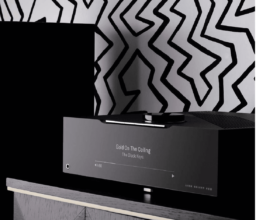DENON AVC-X3800H Review
The Denon AVC-X3800H offers a lot of value. It’s not only capable of delivering a top-notch home theater experience, but it can also provide high-quality sound to a second stereo zone.

Denon AVC-X3800H Tech Specs
Measurements
- Dimensions (W x H x D in mm): 434 x 167 x 379
- Weight: 12.5 kg
- Power Output (Stereo, 4 Ohm / 8 Ohm): 188 W / 131 W
- Signal-to-Noise Ratio: 91 dB
- Channel Separation: 63 dB
- Total Harmonic Distortion: 0.005%
- Power Consumption (Off / Standby / 2 x 5 Watt): — / 0.1 W / 191 W
Features
- Amplifiers / Decoders: 9 / 11.4
- Supported Formats:
- Dolby Atmos / DTS/ Auro 3D / THX: Yes / Yes / No / No
- USB Formats: MP3, WMA, AAC, FLAC HD 192/24, WAV 192/24, ALAC 192/24, DSD 2.8 MHz and 5.6 MHz
- DSP Programs / Auto Calibration: Yes / MultEQ XT32
- Front Connections: USB / HDMI / Analog / Phones: Yes / No / No / Yes
- Audio Inputs:
- Analog / Phono / Optical / Coaxial: 6 / 1 / 2 / 2
- Video Inputs:
- HDMI / Composite / Component: 6 / No / No
- Audio Outputs:
- 11.4 Pre-out, Zone 2 Pre-Out, 4 x Subwoofer / Optical / Coaxial: Yes / No / No
- Video Outputs:
- HDMI / Composite / Component: 3 / No / No
- Multiroom / Bi-Amping: Yes / Yes
- Streaming / FM Tuner / Internet Radio: Yes / No / Yes
- Network / WiFi / Bluetooth: Yes / Yes / Yes
- Special Features: 8K Pass-Through, HEOS, Auro 3D, IMAX Enhanced
High Performance for Your Money
With its nine amplifiers powering 11 speaker terminals, the AVC-X3800H can handle a solid 7.1.2 setup or even a 5.1.4 configuration with two pairs of Atmos speakers.

Additionally, you can hook up a pair of stereo speakers to another set of terminals, enabling you to play audio in a second zone in stereo. If you want to run both a home theater and a music room simultaneously, you’ll need to give up the two Atmos speakers in a 7.1.2 setup or two of the four Atmos speakers in a 5.1.4 setup. Alternatively, you can use active speakers for the second zone via the pre-outputs, and you only need to wire it once since you can switch easily from your seat.

Superior Bass Management
Denon has really focused on bass management with the AVC-X3800H, featuring four subwoofer outputs. This is ideal for large rooms or spaces with complex acoustics. Adding a second, third, or even fourth subwoofer can solve issues like sound reflections causing cancellations. You can also dedicate a subwoofer to the stereo zone to support compact speakers with strong bass. The video inputs and outputs handle all current formats and resolutions, making them perfect for high-end gaming. However, the AVC-X3800H does not accept analog video.
It supports streaming and multiroom functionality thanks to Denon’s Heos technology. Calibration is performed using the built-in Audyssey software, specifically the advanced Audyssey MultEQ XT32 version. For more precise calibration, you can use Dirac Live, though it is a paid software.

Sound Check
The additional pair of Atmos speakers provides a noticeably more stable three-dimensional sound, at least in appropriately sized rooms. The second listening zone is particularly convenient; in our setup, only two of the four ceiling speakers need to be silent, maintaining a solid Atmos experience while stereo sound plays in the other room. The AVC-X3800H handles this with finesse, especially when using the phono input, which all three Denon receivers feature. We also measured amplifier performance that significantly exceeded the factory specifications.
Conclusion
The Denon AVC-X3800H is clearly designed for large home theaters, especially if you want a second listening zone. Its sophisticated bass management can solve many issues for cinephiles, and given its extensive capabilities, the price seems quite reasonable.
Evaluation
- Sound Quality: 40% – 0.9
- Lab Performance: 10% – 1.0
- Practical Use: 25% – 1.0
- Features: 25% – 1.0
Highlights
- 9 powerful amplifiers
- All HDMI inputs are 8K-compatible
- Extensive bass management

Verdict
When you purchase through links on our site, I may earn an affiliate commission. Here’s how it works.








